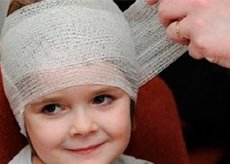New publications
Concussions are more dangerous for girls
Last reviewed: 02.07.2025

All iLive content is medically reviewed or fact checked to ensure as much factual accuracy as possible.
We have strict sourcing guidelines and only link to reputable media sites, academic research institutions and, whenever possible, medically peer reviewed studies. Note that the numbers in parentheses ([1], [2], etc.) are clickable links to these studies.
If you feel that any of our content is inaccurate, out-of-date, or otherwise questionable, please select it and press Ctrl + Enter.

Scientists have determined that a concussion is much more dangerous for girls than for boys. Girls are more impressionable and vulnerable: they are more often upset by situations that practically do not affect boys. Concussions in childhood are more common than other injuries. Due to high motor activity, restlessness and curiosity, children often fall and hurt themselves. Over the course of a year, at least 120 thousand children with such a diagnosis seek help from traumatologists. The maximum number of concussions is recorded at school age: the total number of children among all patients who received a concussion is 45%. Specialists analyzed information about the health of athletes who had a history of concussion between the ages of eleven and eighteen. A total of 110 male patients and 102 female patients were examined. According to the results of the study, it turned out that in girls, recovery from a traumatic brain injury was twice as difficult and took twice as long. Perhaps, as doctors suggest, the recovery of girls is slowed down due to their reduced stress resistance and increased anxiety. Experts have determined that the injured boys showed signs of traumatic brain injury for eleven days after the injury, and the girls - for twenty-eight days. At the same time, more than 70% of boys after 20 days already had practically no pathological signs of injury. Almost 60% of girls even a month later had a number of concussion symptoms. Information has long been spread that any traumatic brain injury (including concussion) in almost all cases complicates previously acquired disorders in the body. Thus, headaches worsen, depressive states return, anxiety increases, stress increases. Boys suffer from such problems and pathological conditions less often. According to scientists, this fact explains the slowdown in the recovery process in girls. "The results of our study only confirmed what doctors who practice sports have suspected for many years," say the leaders of the experiment. "These findings indicate the need for a more thorough and individual approach to therapy for concussions in children. A medical specialist-traumatologist must distance himself from the immediate craniocerebral injury and try to understand the affected psycho-emotional reactions that interfere with the child's quality recovery." Unfortunately, doctors often make mistakes and perceive depression and anxiety in a child as auxiliary signs of a concussion. But the study puts everything in its place: the listed symptoms are primary and really do represent an obstacle to the rapid recovery of brain structures after injury.

 [
[